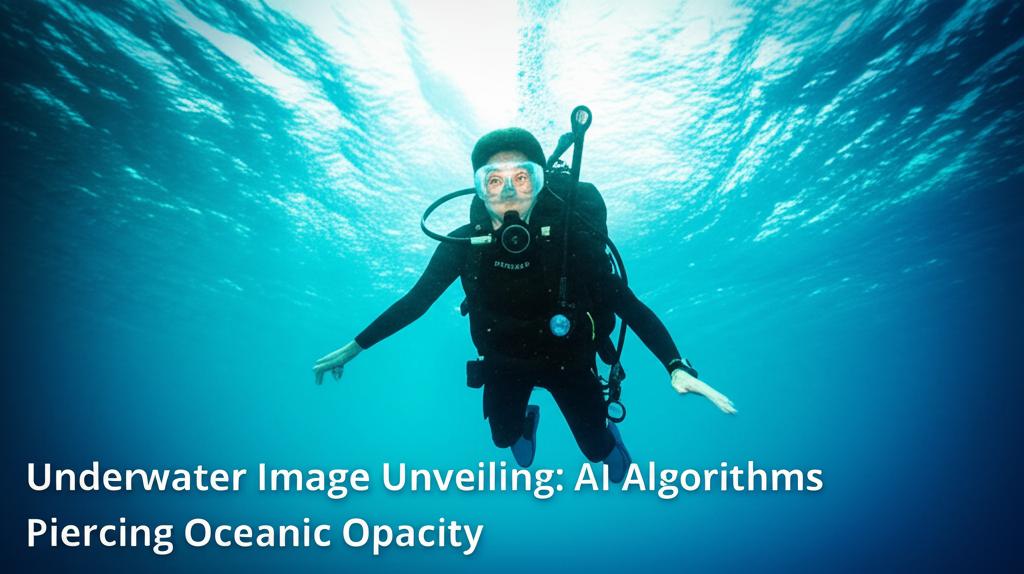The deep, blue expanse of our planet’s oceans holds countless mysteries, its depths often obscured by a murky veil that challenges human exploration. But a technological revolution is underway. Artificial Intelligence (AI) is now piercing through this oceanic opacity, transforming hazy underwater images into clear, detailed vistas, and unlocking secrets of the marine world at an unprecedented rate.
For decades, the underwater realm has been notoriously difficult to capture. Light behaves differently in water, scattering and absorbing, leading to images that are often discolored, blurred, and lacking in contrast. This has been a significant hurdle for marine biologists, archaeologists, and environmental scientists. However, the latest AI algorithms are changing the game.
The AI Toolkit: Seeing Through the MurkScientists and engineers are developing sophisticated AI models, particularly those based on deep learning, to dramatically enhance underwater images. These algorithms are trained on vast datasets of paired images – murky versus clear – learning to identify and correct distortions caused by water.
One exciting area is the development of Generative Adversarial Networks (GANs). GANs involve two neural networks: a "generator" that tries to create realistic clear images from murky inputs, and a "discriminator" that tries to tell the difference between the AI-generated images and genuinely clear ones. Through this competitive process, the AI becomes incredibly adept at restoring color, improving contrast, and revealing hidden details.
Recent advancements include models like FunIE-GAN, U-Net-based architectures, and the new WaterMamba, which uses a visual state space model. These approaches are not only improving image quality but are also becoming more efficient, some even capable of real-time enhancement. This is crucial for applications like guiding Remotely Operated Vehicles (ROVs) and Autonomous Underwater Vehicles (AUVs) through complex underwater environments. For example, a team at Khalifa University developed the SwinWave-SR algorithm, which excels at restoring high-quality images from low-resolution ones, crucial for UUVs that often can't carry bulky high-definition cameras.
Beyond Clarity: AI's Expanding RoleBut AI’s contribution doesn’t stop at just making pictures prettier. These enhanced images become invaluable data for a wide array of applications:
- Biodiversity Monitoring: AI algorithms can automatically identify and classify marine species from images and videos. This is revolutionizing how scientists track fish populations, monitor the health of coral reefs, and discover new species. Projects like FathomNet are creating large, open-source, expertly curated underwater image databases to train these AI models, alleviating the bottleneck of manual image analysis.
- Ocean Exploration and Mapping: AI-powered AUVs are creating detailed 3D maps of the ocean floor, identifying geological features, and even locating shipwrecks. These maps are vital for understanding marine ecosystems, geology, and potential resources.
- Environmental Monitoring: AI helps in tracking pollution, such as plastic debris, and assessing the impact of climate change on marine environments. AI can analyze satellite imagery and data from underwater sensors to detect pollution hotspots and monitor changes in water quality. Some AI models are even being developed to forecast where plastic waste is likely to accumulate.
- Infrastructure Inspection: Underwater structures like pipelines, cables, and bridge supports require regular inspection. AI-enhanced imaging allows for more efficient and accurate assessment of their condition, often without the need for costly and risky human diver interventions. AI models like YOLO11 are being leveraged for real-time object detection and tracking to streamline these automated underwater operations.
The synergy between AI and underwater robotics is particularly powerful. AUVs equipped with advanced sensors and AI-driven image processing can navigate autonomously, collect high-quality visual data, and even perform initial analysis in real-time. This reduces the sheer volume of data that needs to be transmitted and processed later, a significant advantage when dealing with the "data deluge" from long-term underwater monitoring missions. Some systems are even using spiking neural networks (SNNs), like UIE-SNN, which are lightweight and energy-efficient, making them ideal for deployment on AUVs.
Challenges and the Path ForwardDespite the remarkable progress, challenges remain. The underwater environment is incredibly diverse, and AI models trained in one type of water condition may not perform as well in another. Researchers are actively working on creating more robust and adaptable algorithms. The need for large, high-quality datasets for training AI is also a continuous effort, requiring collaboration and data sharing among research institutions worldwide.
The future, however, is bright. As AI algorithms become more sophisticated and computational power increases, we can expect even more breathtaking revelations from the deep. AI is not just clearing up blurry photos; it's providing us with a clearer understanding of our oceans, their inhabitants, and the critical role they play in our planet’s health. The journey to unveil the ocean's secrets is accelerating, with AI as our indispensable guide, piercing the oceanic opacity one pixel at a time.

